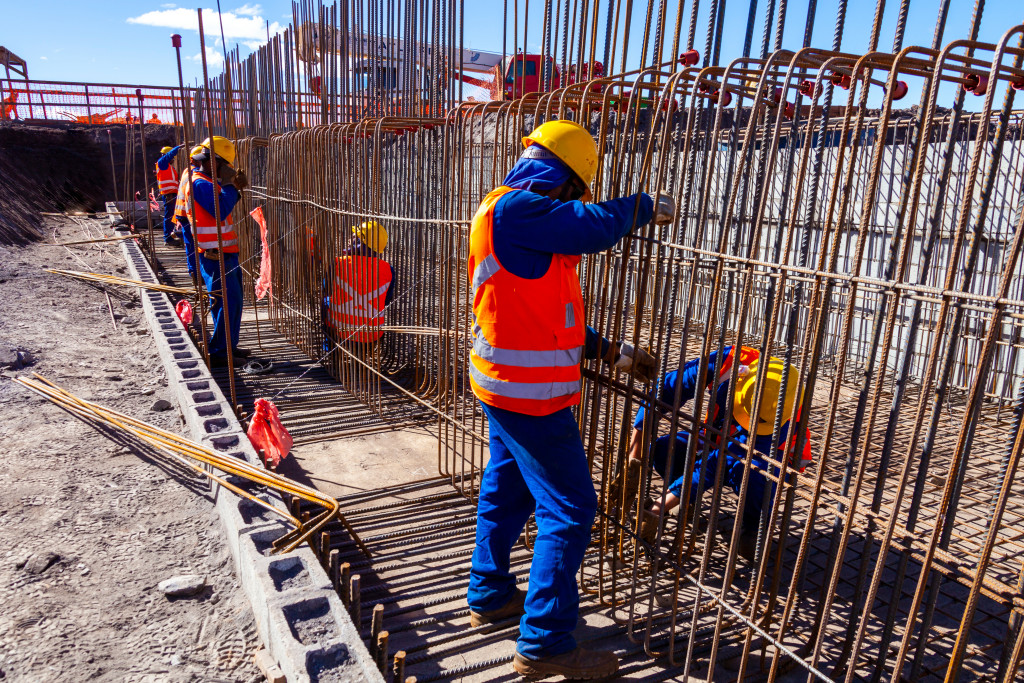- Identify community needs through engaging locals, researching policies, and finding partners for a successful construction project.
- Form a dedicated team, allocating roles and responsibilities to ensure efficient project progression.
- Invest in high-quality rigging equipment, like web slings, wire ropes, and hoists, for safety and efficiency.
- Through careful planning, financial management, and promotion, community construction projects can be successfully executed and impactful.
Undertaking community construction projects is a noble and rewarding venture. These projects can bring the community social, economic, and environmental benefits. However, launching a community construction project can be daunting, especially if you’ve never done it before. Whether you’re a small business owner or a nonprofit leader, here are some tips to help you launch a successful community construction project.
Identify a Need in the Community

The first step in launching a community construction project is to identify a need in the community. Conduct research to discover what issues affect the community and how a construction project can help solve them. Talk to community members, local leaders, and other stakeholders to gather information and insights. This will help you identify a project that meets the needs of the community and has the best chances of success. Here are tips to consider:
Gather Feedback From the Community
Engaging the community in the early planning stages promotes trust and transparency and offers invaluable insights. Schedule community meetings, conduct surveys, or create online forums to gather feedback and ideas. This participatory approach ensures that the project aligns with local needs and desires, boosting community support and fostering a sense of ownership over the forthcoming project.
Research Local Policies
Understanding and adhering to local policies, zoning regulations, and building codes is crucial to the successful implementation of your community construction project. Familiarize yourself with these guidelines early in the planning process to prevent possible legal issues or delays down the line. Consult with city officials or a local attorney to clarify any complicated regulations. This legal groundwork can help ensure your project complies with all local requirements and stands the test of time.
Identify Partners
Finding the right partners can significantly enhance the success of your community construction project. Potential partners can bring in additional resources, expertise, or even help in navigating through complex regulations. Consider collaborating with local businesses, other nonprofits, or even government agencies. Each partner’s unique skills and connections can contribute significantly to the project’s overall success, from planning and financing to construction and maintenance.
Form a Dedicated Team

Launching a community construction project requires a team effort. The project cannot be successful if one individual does it.
Assemble a team of dedicated individuals who are passionate about the project and willing to commit their time and resources. This could include volunteers, employees, community members, or other stakeholders.
Furthermore, assigning roles and responsibilities to each team member is essential. This clear delegation of tasks can help ensure that the project progresses in a timely fashion while avoiding confusion, delays, or misunderstandings.
Invest in Proper Rigging Equipment
Investing in the right rigging equipment is crucial to launching any community construction project. High-quality, safe, and reliable equipment ensures smoother operations, reducing the chances of any untimely and costly disruptions. Furthermore, it helps protect the workers involved, thereby adhering to occupational safety standards. This investment includes purchasing or renting the right machinery and tools and providing adequate training to the team members handling them. Here are some examples:
Web Slings
Web slings are integral components in lifting heavy materials and performing various construction-related tasks. Notably, durable synthetic web slings are recommended for their strength, flexibility, and resistance to wear and tear. They are lightweight, easy to handle, and less likely to cause damage to the load being lifted. Its durability ensures it withstands the rugged conditions of a construction site, helping to bolster efficiency and safety in your community construction project.
Wire Ropes
Wire ropes are another essential tool in the construction industry due to their high tensile strength and durability. They are often used for lifting loads, rigging, hoisting, and towing operations. Wire ropes come in various configurations and coatings, each designed for a specific application. Therefore, choosing the one that best suits your project’s needs is crucial.
Hoists and Winches
Hoists and winches are vital for lifting and moving heavy materials on a construction site. These pieces of equipment significantly enhance productivity, streamline operations, and bolster on-site safety. Hoists can raise or lower heavy materials using a drum or lift-wheel with chain or wire rope, while winches are used to pull heavy objects. When selecting hoists or winches for your community construction project, consider factors such as load capacity, lift speed, and durability to ensure that they can effectively meet the demands of the project.
Launching a community construction project can be challenging but worth it. Remember that you can successfully implement your project by identifying community needs, forming a team, developing a plan, financial planning, and promoting the project. The project can then benefit the community and leave a lasting impact on people’s lives. As a small business owner or nonprofit leader, you have the power to make a positive change in your community.



